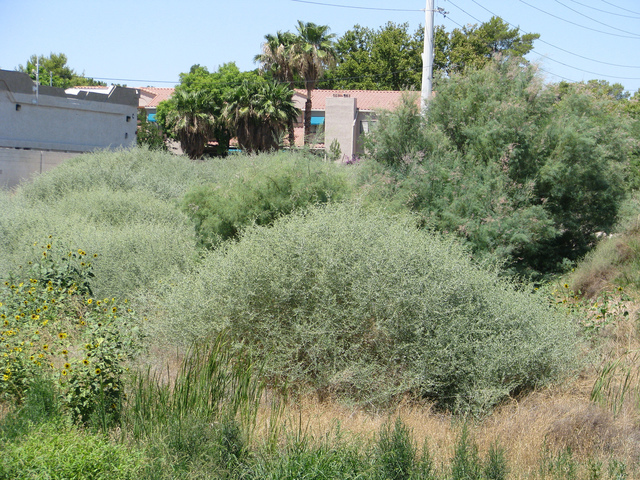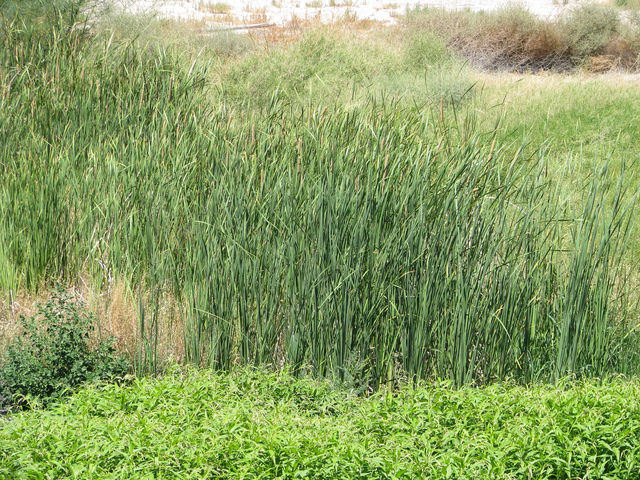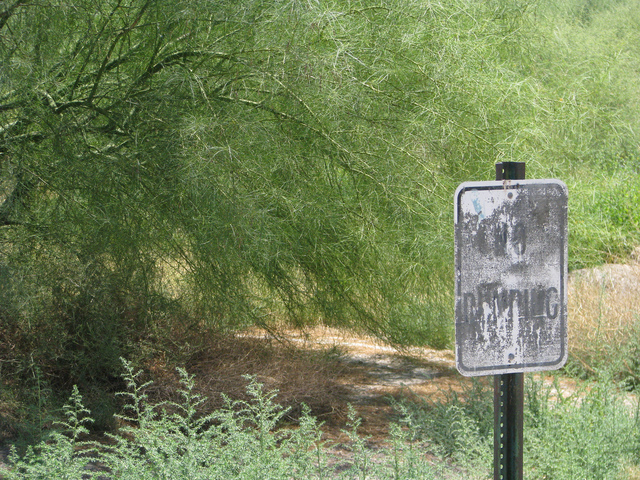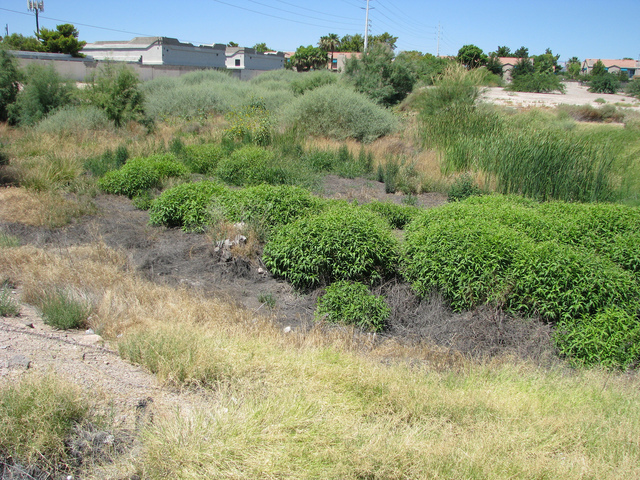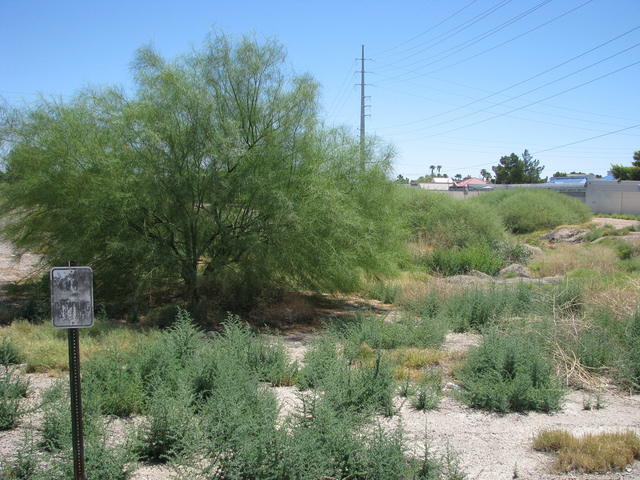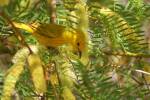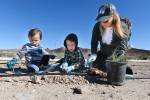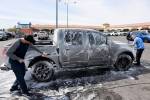Las Vegas Valley wash facing potential development
To Lori Paul and many of her neighbors, the plot of land they have dubbed the “Hobbit Wash” is a green oasis and a respite from suburbia and businesses. To the past and current owners of the land, it’s a runoff ditch with no environmental value. Government agencies have studied it and sided with the owners, so it seems inevitable that the green island’s days are numbered.
“Kids used to go down there and catch pollywogs,” Paul said. “People would walk down there to watch birds and see a little nature. The previous owner tried to destroy it three times by bulldozing into it, but it’s come back every time.”
Paul said that each time it was destroyed, some native vegetation was lost and more invasive species took their place. She noted the loss of old trees, including honey mesquites. She helped create a website, hobbitwashwetland.org, to get the word out and to show people historical pictures and maps and nature photography from the wash. There is also a petition on the site.
Around three years ago, the property was sold and fenced off. Last year, designs were submitted for an assisted living facility on the plot of property that includes the wash, and Paul and some of her neighbors went to Clark County District E Commissioner Chris Giunchigliani to see if something could be done to preserve the wash.
“I had concerns because I had met with some ladies who felt it could possibly be a wetlands,” Giunchigliani said. “I had it held and asked them to go to the Army Corp of Engineers to ask them to verify if it was or not. We got the letter back, and it’s not a wetland.”
Paul, a biologist who lives and works in California part time, disagrees with the assessment.
“The army corp of engineers issued a jurisdictional letter that under their definition, the Hobbit Wash wasn’t a wetland,” Paul said. “The two criteria it doesn’t meet is that it doesn’t have enough organic soil, and it doesn’t have a high water mark. They say the water doesn’t flow to Lake Mead; it empties into a gravel field. That’s all caused by construction and the previous owners pushing fill into it. We’re caught in this Catch-22 that you can degrade and destroy a place and then say it’s no longer protected.”
Paul pointed out that the Hobbit Wash has been there for longer than the city has been in the valley. Old maps and aerial photography seem to show that it was one of the paths of the Flamingo Wash made by the ash splitting uphill and rejoining downstream. Most of the Flamingo Wash has been converted into a concrete channel in recent years, and it runs north of the Hobbit Wash.
Giunchigliani, a vocal opponent to the destruction of green areas in the valley, said that her hands were tied by the report.
“The report said that there’s just one little pocket of cattails and no unusual birds in the wash,” the commissioner said. “The water isn’t coming from the Flamingo Wash; it’s coming from the parking lot. I didn’t have legal standing to deny it because it was a legal use for that area. The developers did agree to redesign so there’s less impact. They’re going to clean out the invasive species, and hopefully, when it grows back, more native species will come in.”
Paul said that the redesign won’t matter to the animals that live there because it will force them away or kill them. She concedes that the Hobbit Wash isn’t connected to the Flamingo Wash anymore but believes it to be the last green fragment of the old wash. The area collects water not just from the parking lot but several of the nearby roads drain into it, notably University Avenue. She also believe that the biologist hired to examine the area missed key wildlife there, including evidence she has spotted of the presence of a burrowing owl. She has sought out the support of Rob Mrowka, senior scientist at Center for Biological Diversity.
“I’ve sent a comment letter to the commission,” Mrowka said. “It talks about the health benefits to the community that even a small natural area affords. It positively affects the psychology of people. There are species that adapt to a human environment, and there’s a certain value to humans being able to interact with those species. There are still opportunities scattered throughout the valley, such as the Hobbit Wash, where we could make the decision to maintain micro-preserves in the neighborhoods and have people connect with nature.”
There is something of a “not in my backyard” aspect to Paul’s arguments. She said that the neighborhood was quiet until several medical businesses were built in the area, bringing with them 24/7 ambulance noise. She balks at the thought of another medical facility in the neighborhood and is quick to point out the numerous plots of land in the valley that are barren or occupied only by vacant commercial buildings.
“Why destroy this little spot of nature when there are so many other places where this could be built?” Paul said. “I’ve talked to (developer) Mike Ochoa, and he’s actually a fairly nice fella. He just has no expertise or interest in nature. I don’t think he’d know a weed from an endangered species, but he’s building a nursing home, and he’s got a lot of time and money tied up in the project.”
She holds more negative feelings toward the previous owner who felt the wash was an attractive nuisance and took what she felt were great efforts to destroy it.
“I’m sorry, but it’s been there for hundreds, perhaps thousands, of years, and no child drowned in it yet catching tadpoles,” Paul said. “They’ve watched hummingbirds build their nests. They’ve picked wildflowers. Now it’s been so impacted that it’s been deemed unworthy to save.”
To reach East Valley View reporter F. Andrew Taylor, email ataylor@viewnews.com or call 702-380-4532.



